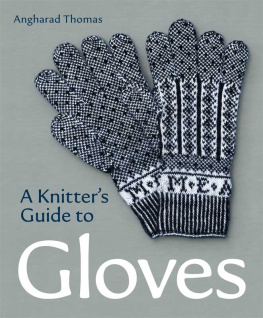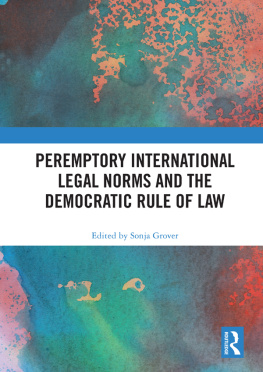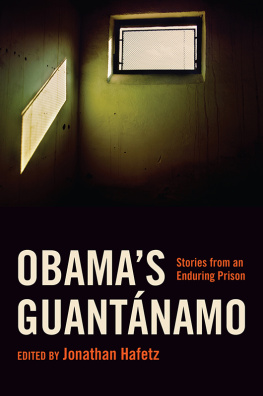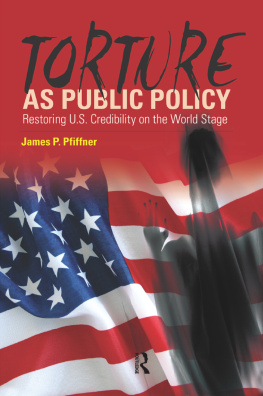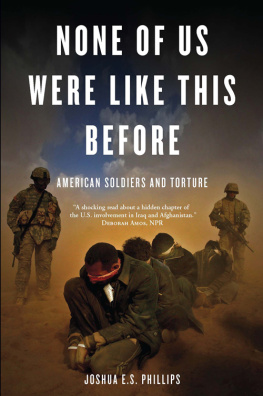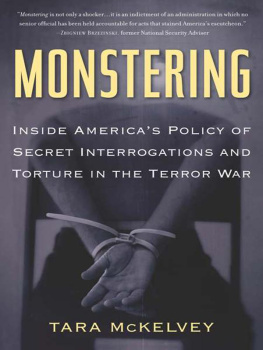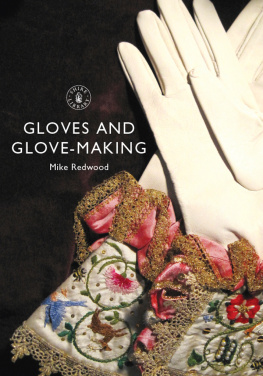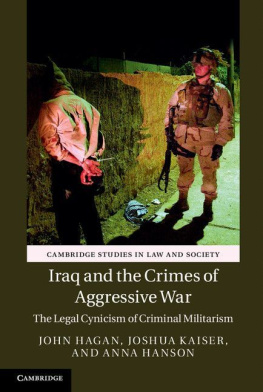HOW THE GLOVES CAME OFF
COLUMBIA STUDIES IN TERRORISM
AND IRREGULAR WARFARE
COLUMBIA STUDIES IN TERRORISM AND IRREGULAR WARFARE
Bruce Hoffman, Series Editor
This series seeks to fill a conspicuous gap in the burgeoning literature on terrorism, guerrilla warfare, and insurgency. The series adheres to the highest standards of scholarship and discourse and publishes books that elucidate the strategy, operations, means, motivations, and effects posed by terrorist, guerrilla, and insurgent organizations and movements. It thereby provides a solid and increasingly expanding foundation of knowledge on these subjects for students, established scholars, and informed reading audiences alike.
Ami Pedahzur, The Israeli Secret Services and the Struggle Against Terrorism
Ami Pedahzur and Arie Perliger, Jewish Terrorism in Israel
Lorenzo Vidino, The New Muslim Brotherhood in the West
Erica Chenoweth and Maria J. Stephan, Why Civil Resistance Works: The Strategic Logic of Nonviolent Resistance
William C. Banks, New Battlefields/Old Laws: Critical Debates on Asymmetric Warfare
Blake W. Mobley, Terrorism and Counterintelligence: How Terrorist Groups Elude Detection
Jennifer Morrison Taw, Mission Revolution: The U.S. Military and Stability Operations
Guido W. Steinberg, German Jihad: On the Internationalization of Islamist Terrorism
Michael W. S. Ryan, Decoding Al-Qaedas Strategy: The Deep Battle Against America
David H. Ucko and Robert Egnell, Counterinsurgency in Crisis: Britain and the Challenges of Modern Warfare
Bruce Hoffman and Fernando Reinares, editors, The Evolution of the Global Terrorist Threat: From 9/11 to Osama bin Ladens Death
Boaz Ganor, Global Alert: The Rationality of Modern Islamist Terrorism and the Challenge to the Liberal Democratic World
M. L. R. Smith and David Martin Jones, The Political Impossibility of Modern Counterinsurgency: Strategic Problems, Puzzles, and Paradoxes
ELIZABETH GRIMM ARSENAULT
HOW THE GLOVES CAME OFF
Lawyers, Policy Makers, and
Norms in the Debate on Torture
Columbia University Press / New York
Columbia University Press
Publishers Since 1893
New York Chichester, West Sussex
cup.columbia.edu
Copyright 2017 Elizabeth Grimm Arsenault
All rights reserved
E-ISBN 978-0-231-54325-5
Library of Congress Cataloging-in-Publication Data
Names: Arsenault, Elizabeth Grimm, author.
Title: How the gloves came off: lawyers, policy makers, and norms in the debate on torture / Elizabeth Grimm Arsenault.
Description: New York: Columbia University Press, [2017] | Series: Columbia studies in terrorism and irregular warfare | Includes bibliographical references and index.
Identifiers: LCCN 2016021891 (print) | LCCN 2016034286 (ebook) | ISBN 9780231180788 (cloth: alk. paper) | ISBN 9780231543255 (e-book)
Subjects: LCSH: TortureGovernment policyUnited States. | Prisoners of warUnited StatesHistory.
Classification: LCC HV8599.U6 A77 2017 (print) | LCC HV8599.U6 (ebook) | DDC 364.6/7dc23
LC record available at https://lccn.loc.gov/2016021891
A Columbia University Press E-book.
CUP would be pleased to hear about your reading experience with this e-book at .
Cover design: Archie Ferguson
CONTENTS
I AM DEEPLY grateful for the wisdom and encouragement from many friends and colleagues who helped me complete this project. During my graduate studies at Georgetown University, George Shambaugh, Colin Kahl, and, especially, Anthony Arend shaped my thinking about international relations and international law. In addition, special thanks are owed to the late Christopher Joyner, who helped motivate this project from the beginning, reading the first ten-page draft of this paper. He will be remembered by all who knew him as a man of unfailing enthusiasm and encouragement.
My dear friends Tricia Bacon, Dan Baltrusaitis, Sarah Cross, and John Sawyer provided countless hours of editing and unflagging support. Their wit, calmness, and counsel were necessary for writing this book.
I am grateful for the support of my colleagues in the Security Studies Program, in particular for the support of Bruce Hoffman, as well as former colleagues from the College of William and Mary, notably Dennis Smith and Sue Peterson.
I would also like to thank my teachers and mentors from the College of William and Mary, George Washington University, and Georgetown University.
For her early interest in the book and assistance in guiding it through the publication process, I am grateful to Anne Routon at Columbia University Press. I am also indebted to Carole Sargent at Georgetown University for her guidance, encouragement, and feedback.
Thank you does not seem sufficient to express my gratitude to the incredible undergraduate and graduate students who have provided their research support to this project. To Colette Clark, Rosemary Pritchett-Montavon, Amanda Powers, Stephen Okin, Hijab Shah, and Trevor Nielsen: many thanks for their patience, time, and hard work. These brief sentences do not do justice to their sublime efforts in making this final product possible. Stephen Okin, in particular, questioned assumptions and provided essential feedback, strengthening the arguments presented in this book.
For everythingbut especially his patience and loveI thank Jacques.
Lastly, for their love and unfailing support, I dedicate this book to my parents.
Now when we raise our heads and look in the mirror, we see an unfamiliar and hideous reflectionourselves. Appalled, the French are discovering this terrible truth: that if nothing can protect a nation against itself, neither its traditions nor its loyalties nor its laws, and if fifteen years are enough to transform victims into executioners, then its behavior is no more than a matter of opportunity and occasion. Anybody, at any time, may equally find himself victim or executioner. Happy are those who died without ever having had to ask themselves:If they tear out my fingernails, will I talk? But even happier are others, barely out of childhood, who have never had to ask themselves that other question:If my friends, fellow soldiers, and leaders tear out an enemys fingernails in my presence, what will I do?
JEAN-PAUL SARTRE, THE QUESTION
T HE IMMEDIATE ANSWER to the question of why the United States tortured in the aftermath of the 9/11 attacks is a surprisingly simple one: no one who could end the program, amend guidance, or overturn decisions said no. Throughout the duration of the program, many individualssome known and scores who will remain unknownpushed back. They challenged the notion that torture was an effective means to gain actionable intelligence. They argued that the use of these methods would imperil U.S. servicewomen and -men serving abroad. They insisted that torture defiled U.S. values and rendered vague the line between U.S. methods and the methods of the terrorists being fought. But still no one said no. In fact, many peoplepolicy makers, lawyers, and interrogatorsactively said yes.
The more interesting question to ask is not why the United States decided to torture but how we came to a place in U.S. history where techniques such as sleep deprivation, waterboarding, and rectal hydration would even be considered at the highest levels of government. How did we arrive at a decision point in which torture was even on the table? How did so many people say yes to these techniques? Answering these questions requires examining U.S. history and taking a deeper look at the actors and agencies involved in the decision-making process. Answering this question also requires investigating the importance of international humanitarian law and norms to U.S. values and identity. The United States did not casually or arbitrarily determine in the months after 9/11 that it was acceptable to slap detainees or to put them in cramped spaces with insects. Rather, the decision to torture individuals in U.S. custody was the result of deliberate decisions made by top policy makers and lawyers to challenge existing norms and laws. Despite the normative and legal constraints imposed by the Geneva Conventions and the United Nations Convention Against Torture (CAT), these actors again and again demonstrated the willingness and capacity to challenge the legal status quo.


